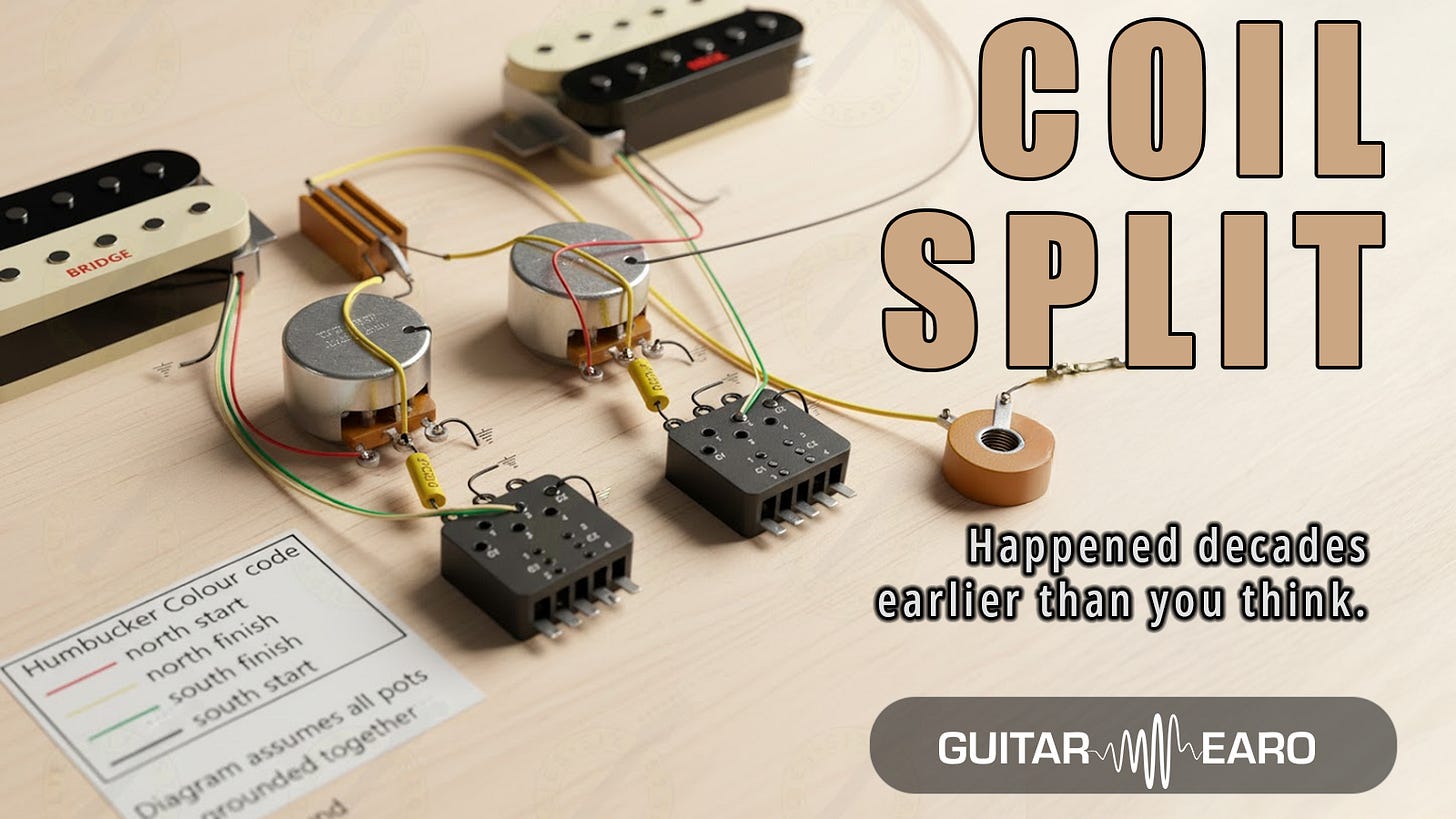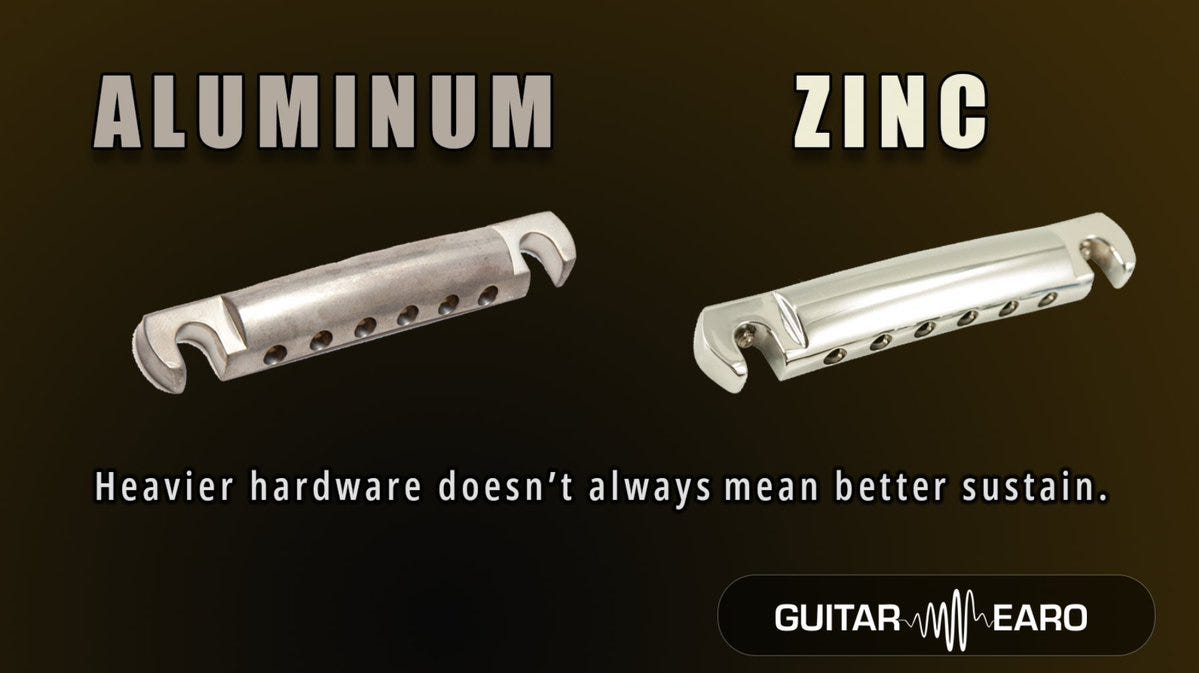Before Leo Fender’s 1950 Broadcaster (later renamed the Telecaster) came a scattershot lineage of DIY inventors and visionary tinkerers. Some names are famous (Les Paul). Others are cult footnotes (Paul Tutmarc). Together, they proved a radical idea: that wood didn’t need to resonate acoustically to become a powerful musical instrument.
This isn’t just trivia. It’s the story of how tone itself was reinvented.
1937: Paul Tutmarc and the Audiovox 736
Seattle bandleader and inventor Paul Tutmarc quietly built one of the first known solidbody electrics: the Audiovox 736 electric bass, along with a few guitar prototypes.
Tutmarc’s design was crude but crucial. Instead of relying on a hollow body for resonance, he placed the pickup directly under the strings of a solid slab. The result: more <a href="do-heavier-guitars-actually-sustain.html">sustain</a>, less feedback.
His bass was even more revolutionary: a fretted, solidbody instrument meant to be played horizontally. In hindsight, it was a precursor to the Fender Precision Bass, introduced 14 years later.
History largely forgot Tutmarc, but he cracked open the door.
1941: Les Paul’s “Log”
Les Paul wanted sustain and freedom from the howl of hollowbodies. His solution was radical: a 4x4 piece of pine with a Gibson Epiphone <a href="why-i-do-not-have-a-stiff-neck.html">neck</a>, a pickup, and “wings” from an archtop guitar glued to the sides.
The wings were camouflage. When Les first showed the prototype in clubs, audiences laughed at the plank. He added the Epiphone body sides so it looked more like a “real guitar.”
Nicknamed The Log, it did what it was designed to do:
It resisted feedback
It sustained for days
It proved the concept that an electric guitar could be built like a machine, not a violin
Les Paul was laughed at by Gibson’s executives, too. But the idea would return with force a decade later.
1948: Paul Bigsby’s Guitar for Merle Travis
Country picker Merle Travis asked Paul Bigsby, already a known innovator thanks to his vibrato tailpiece, to build him a new guitar.
The result was stunning:
A solid cutaway body
Through-neck construction
Six tuners lined up on one side of the headstock
Sound familiar? That headstock became the blueprint for Leo Fender’s Telecasters and Stratocasters.
Legend has it Leo even borrowed Travis’s Bigsby guitar for study. Whether that’s myth or fact, the resemblance is undeniable. Bigsby’s guitar looked and felt like a modern solidbody, two years before Fender put his into production.
1950: Fender Broadcaster / Telecaster
Leo Fender wasn’t a luthier. He was a radio repairman who thought in terms of modularity and mass production.
His Broadcaster (quickly renamed the Telecaster after a Gretsch trademark dispute) wasn’t elegant. It was a slab of ash with a bolt-on maple neck. But it was genius:
Easy to mass-produce
Easy to repair (warp a neck? swap it out in minutes)
Perfect for working musicians
Tonally, it was a revolution. The bright “spank” of its bridge pickup cut through Western swing, country, and eventually rock.
More importantly, it was the first commercially successful solidbody.
Why Solid Matters
Shifting from hollow to solid changed the electric guitar’s destiny:
Feedback resistance: Solids let guitarists play at higher volumes without uncontrollable howl.
Sustain: More direct coupling of string to wood meant notes rang longer.
Tone clarity: Without hollowbody resonances, highs stayed snappy and lows stayed tight.
That meant louder amps. Louder amps meant rock ’n’ roll.
It’s no exaggeration: without the solidbody, rock as we know it could not exist.
Who Was First?
Tutmarc. Les Paul. Bigsby. Fender.
Each made a claim. Each can be called “first” depending on the definition:
First prototype? Tutmarc.
First famous experiment? Les Paul.
First modern design? Bigsby.
First commercial success? Fender.
But the truth is simpler: invention rarely belongs to one genius. It belongs to the messy chain of experimenters who build on each other’s failures.
The Takeaway
Every guitar you play today rests on three ghosts:
Tutmarc’s Audiovox slab
Les Paul’s Log
Bigsby’s Merle Travis model
And one stubborn TV repairman who turned their experiments into a factory-built tool for the masses.
By 1950, the solidbody Spanish guitar had arrived. Tone would never be the same.
Learn the Tone, Save the Sound
The story of the solidbody is a story of tone freedom. Of DIY thinking that reshaped music forever.
If this history made you look twice at your own guitar, you’ll want to follow what we’re building at Guitar Earo, a platform for learning, comparing, and preserving the sound of guitars across eras.
🔗 Subscribe here:
Learn the Tone,
Save the Sound,




